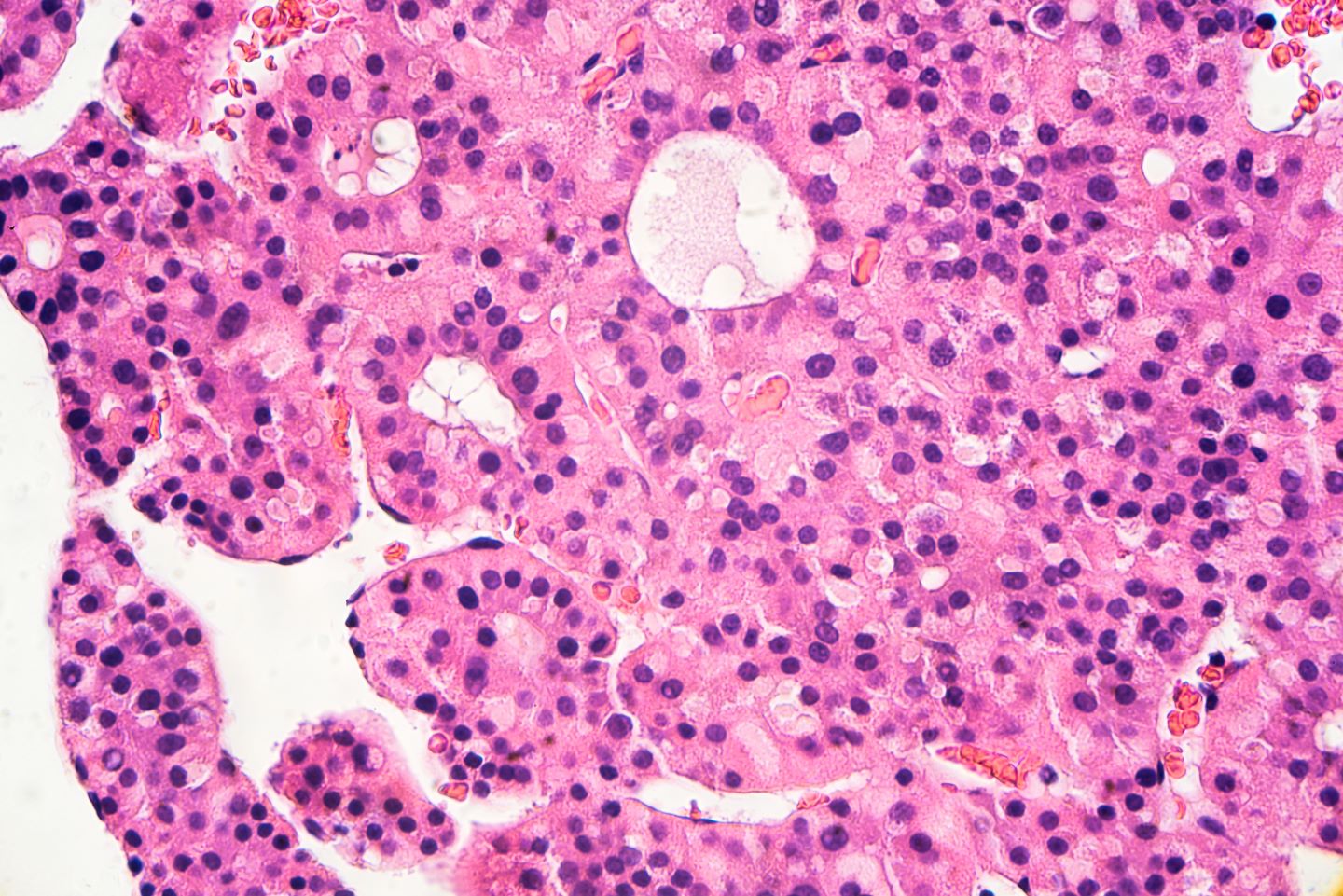On 15 August, Tempest Therapeutics announced its plan to initiate a global Phase III study for its leading candidate amezalpat (TPST-1120), a first-in-class peroxisome proliferator-activated receptor alpha (PPAR⍺) antagonist, in Q1 2025 after a positive end-of-Phase II meeting with the FDA. In the Phase I/II MORPHEUS-liver trial in frontline metastatic hepatocellular carcinoma (HCC), the oral antagonist demonstrated a remarkable median overall survival (OS) of over 21 months (hazard ratio [HR] 0.65) as a triplet therapy in combination with the contemporary standard of care (SOC), Roche’s Tecentriq (atezolizumab) + Avastin (bevacizumab). The result empowered amezalpat to be the first candidate to show a head-to-head OS comparison in efficacy that overpowered the established first-line immunotherapy (IO) regimen, which only showed an OS of 15 months in the same trial. Tempest plans to enrol over 700 patients in the upcoming, blinded, 1:1 randomised, pivotal trial where the triplet will be pitched against the SOC doublet in the first line once more. If the amezalpat triplet replicates the same level of efficacy and safety on a wider scale in Phase III subjects, the regimen’s differentiation in clinical evidence will unlock a total available market of more than 28,000 first-line patients in the US and the five major European markets (France, Germany, Italy, Spain, and UK), while creating a meaningful edge for the regimen over the competing intravenous IO doublets: AstraZeneca’s Imfinzi (durvalumab) + Imjudo (tremelimumab) and Bristol Myers Squibb’s Opdivo (nivolumab) + Yervoy (ipilimumab).
According to GlobalData’s Pharmaceutical Intelligence Center (PIC), amezalpat is the only PPAR⍺ antagonist in active clinical development in oncology. Inhibition of PPAR⍺ disrupts the pathway for fatty acid oxidation (FAO), diminishing the production of energy in the form of adenosine triphosphate (ATP) in various types of cancer cells. Leveraging amezalpat’s unique mechanism of action, Tempest is also exploring the candidate’s efficacy in FAO-dependent, relapsed/refractory renal cell carcinoma and cholangiocarcinoma. GlobalData’s analyst consensus forecast revealed that the market currently anticipates amezalpat to achieve $23m in its first year of sales in 2028, and to see explosive growth reaching $167m by the end of this decade. The market expects very limited contribution from amezalpat’s ex-US sales, which make up only 10%–20% of the forecast total sales. Seeking a commercialisation partner in ex-US markets is a viable next step for Tempest to capitalize on amezalpat’s planned large-scale global trial and surpass market expectations.
Data from the Phase I/II trial suggests that PD-L1-negative and β-catenin-mutated patients are the two populations that produce better responses to the regimen, making them the highlighted subgroups of interest in the pivotal trial. Although the relationship between PPAR⍺ modulators and the Wnt/β-catenin pathway is not fully clear, the amezalpat triplet has demonstrated a longer median OS (mOS) in β-catenin mutated patients at 23.5 months (HR 0.65), compared to 21.1 months (HR 0.51) in wild-type patients. In contrast, the SOC control arm only showed a 15-month mOS regardless of β-catenin status. The candidate also yielded a higher confirmed overall response rate (ORR) of 30% in the intent-to-treat population, versus 13.3% in the SOC arm. The regimen’s safety profile was reported to be consistent with the Tecentriq + bevacizumab SOC. Comparing the triplet and the comparator, the occurrence of Grade 3 or higher treatment-emergent adverse events (TEAEs) (70% versus 75.9%) and TEAEs leading to withdrawal (12.5% versus 13.8%) were numerically similar. The amezalpat regimen is expected to produce a different side effect profile from the conventional combinations of PD-(L)1 and CTLA-4 inhibitors, minimizing the gastrointestinal and dermatologic toxicities from the immune checkpoint blockade.
Still, there is room for uncertainty about the regimen’s efficacy and safety since the currently observed data has been established based on the 40 patients enrolled in the amezalpat arm and 30 patients in the SOC arm. Furthermore, patients with hepatitis C-related HCC were reported to receive no OS benefit from the regimen, with an HR of 1.16. As the upcoming market catalyst, a topline result readout will likely occur in H1 2027 projecting from Tempest’s current Phase III plan.
Amezalpat was not the only HCC candidate to be brought into the later stage of development by the Roche-sponsored MORPHEUS-liver trial. Roche’s tiragolumab is being evaluated in the Phase III Skyscraper-14 trial as another triplet combination with Tecentriq and bevacizumab in the front line. In the MORPHEUS-liver study (n=40), the TIGIT-based triplet demonstrated an improved confirmed ORR of 42.5% (versus 11.1%) and an extended median progression-free survival of 11.1 months (versus 4.2 months) when compared to the SOC. Amezalpat offers a slight edge in administration convenience as the tiragolumab regimen requires three consecutive intravenous infusions in a row. Enrolling 650 patients, the Skyscraper-14 trial will finally reveal the OS efficacy of the TIGIT-based triplet following its primary completion date of September 2026.
See Also:
How well do you really know your competitors?
Access the most comprehensive Company Profiles on the market, powered by GlobalData. Save hours of research. Gain competitive edge.

Thank you!
Your download email will arrive shortly
Not ready to buy yet? Download a free sample
We are confident about the unique quality of our Company Profiles. However, we want you to make the most beneficial decision for your business, so we offer a free sample that you can download by submitting the below form
By GlobalData









Related Company Profiles
AstraZeneca Plc
Bristol-Myers Squibb Co